Seniors Financial Assistance Application
Ministry of Seniors and Housing, Government of Alberta
October 2020 – January 2021
User Experience Design • Public Service Design • Web

Problem
Alberta’s senior population is growing while available administrative resources are shrinking due to retirement and budgetary constraints.
Seniors and Housing sought to accelerate transformation to a more efficient, self-serve, and senior-centered model for digital program delivery for Seniors Financial Assistance. The desired delivery outcomes were:
- increasing program efficiency;
- improving self-service options for seniors accessing benefit programs; and,
- reducing the number of phone calls/contacts to the Alberta Supports Contact Centre.
Approach
Users & Audience
- Seniors (65+) and soon-to-be seniors (55+)
- Alberta government staff and call centre workers
- Seniors families and support networks
- Private & community housing providers
- Third-party & community services
Role & Team
- My role: User Experience designer, User Interface designer, User researcher
- Product team also consisted of: 3 Full-stack developers, a Strategist, and a Product owner
Scope & Constraints
- Keeping seniors in their homes as long as possible to increase health outcomes—”aging in place”
- Identifying gaps in service delivery
- Addressing needs in a holistic way, beyond income as a sole indicator
- Create an intuitive and easy interface for seniors to:
- apply for assistance,
- view, maintain, and edit their own files and records,
- receive and send communications related to their financial assistance,
- make support care requests,
- monitor and update financial information.
- Transparent process and information to prevent Elder abuse
- Find service efficiencies and reduce administrative overhead
Challenges
- Someone else is often acting on behalf of the senior. How might we design a system that both protects the privacy and security of the senior, while allowing someone else to assist them, without compromising a vulnerable population?
- Seniors often have multiple and co-morbid needs and may not be aware of it
- Information is hard to find and exists across multiple websites and PDFs, across multiple Ministries and levels of government, forcing people to call due to confusion and information overload
- When people call they receive inconsistent information, due to inconsistent training and the above challenge of information dispersal
- Seniors in long-term health facility that lack an advocate, or worse, have an advocate that don’t advocate can get caught and lost in the system. How do we build a service that is able to mitigate and empower the senior in these instances?
Our approach
- Human-centred research and co-design/consultation
- Assessment of real need from a wide and diverse set of stakeholders and interests
- Focus on primary research and workshops
- Input and feedback would drive and inform additional research / design direction
Recommendations
- Create an authenticated portal for seniors to self-manage their records (update their income, address details, marital status), receive up-to-date information, see their application status / wait times, and identify their entitlements and usages for existing benefits
- Create an unauthenticated portal which consolidates links to relevant information that would connect and inform seniors programs for internal and external stakeholders, including seniors and their support networks
- Continued digitization of documents and processes that enable seniors to self-serve, reducing the frequency and duration of calls to enquire about process and information updates and clarifications
Artefacts and deliverables
Product roadmap

Opportunities and affinity mapping
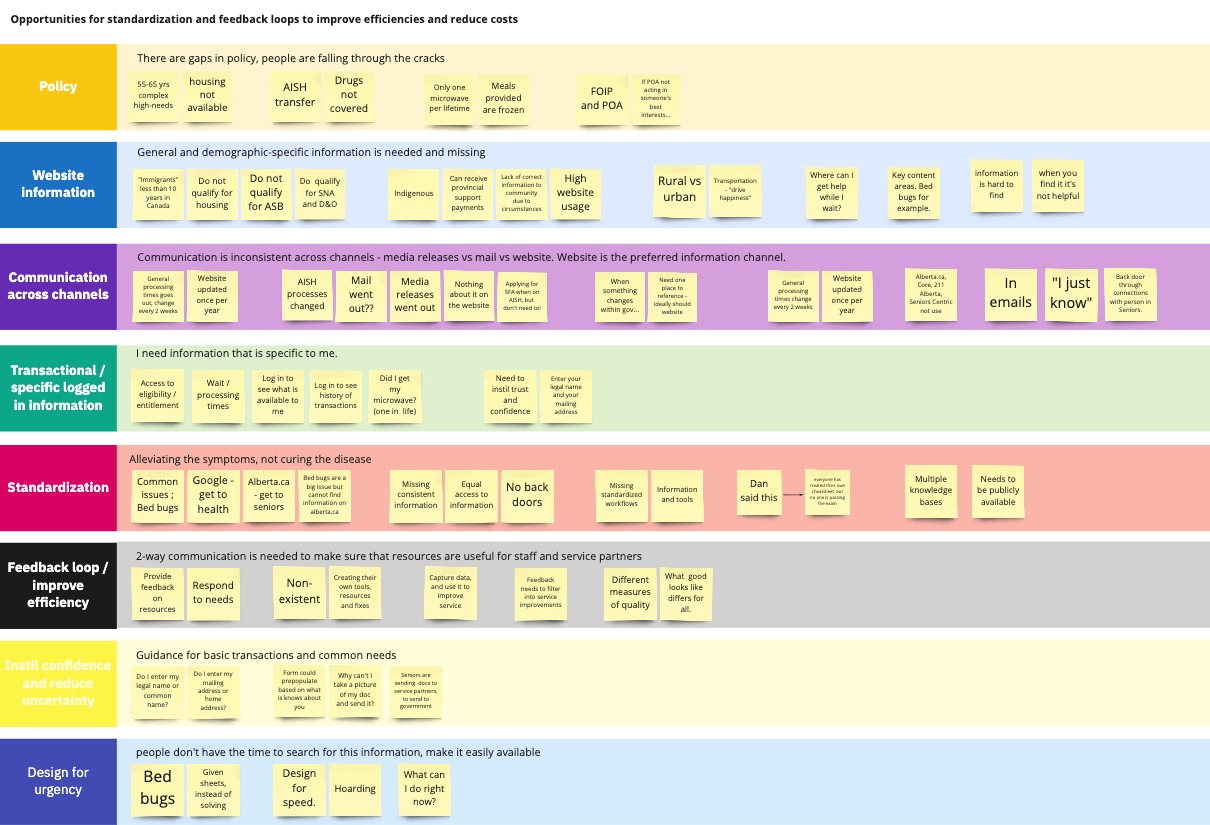
Information Concept model

Storyboard — Current state


Storyboard — Future state
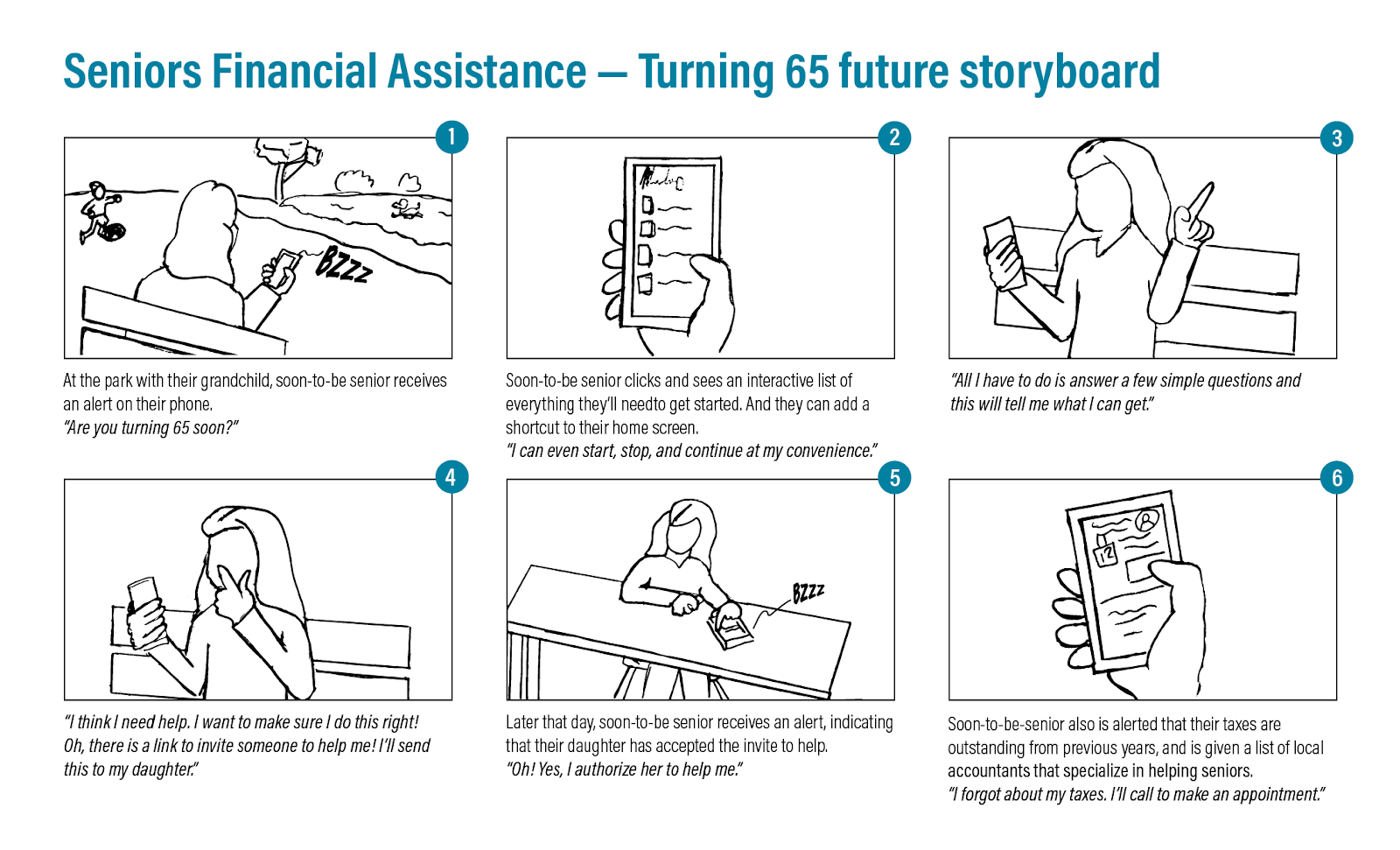
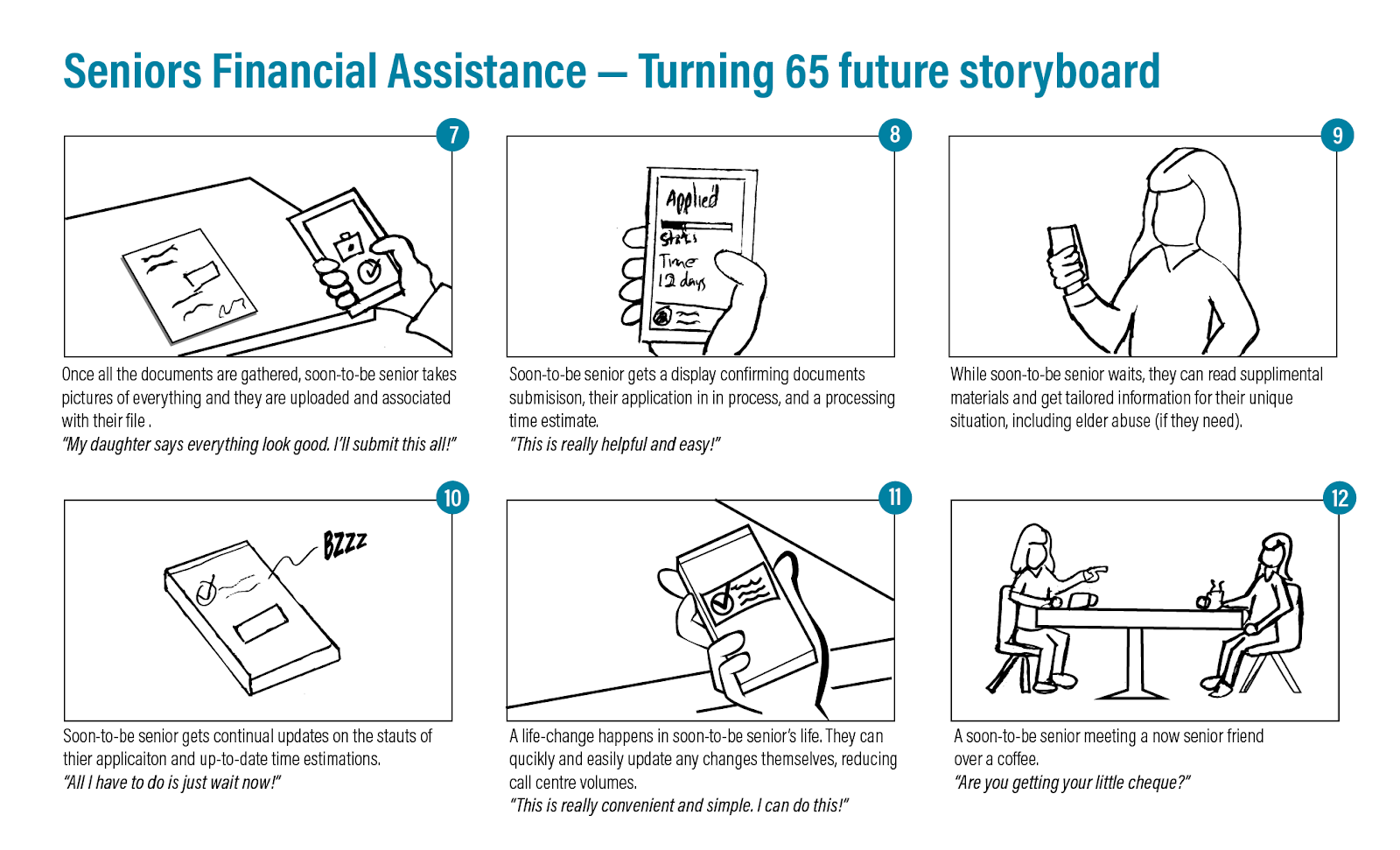
Sketches
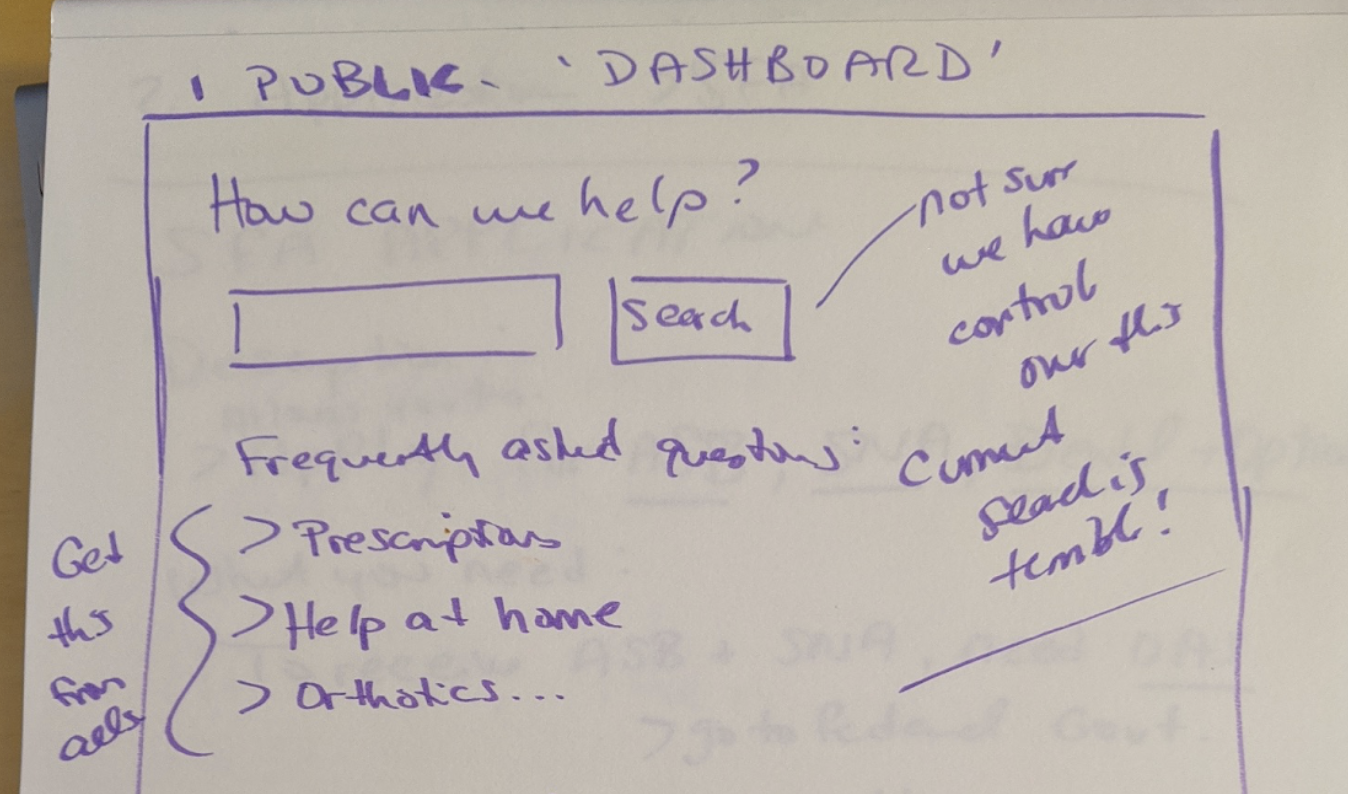
Low-fidelity wireframes

Prototype
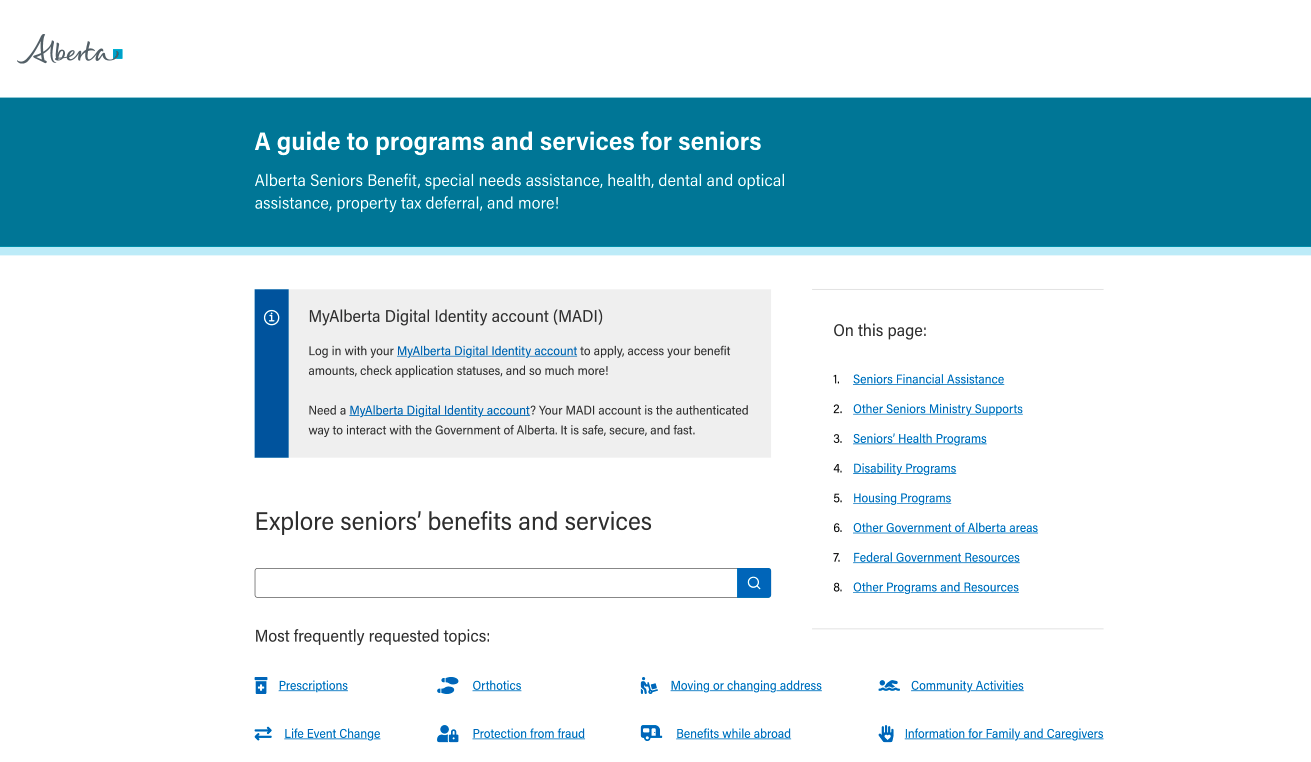
Initial mock-up
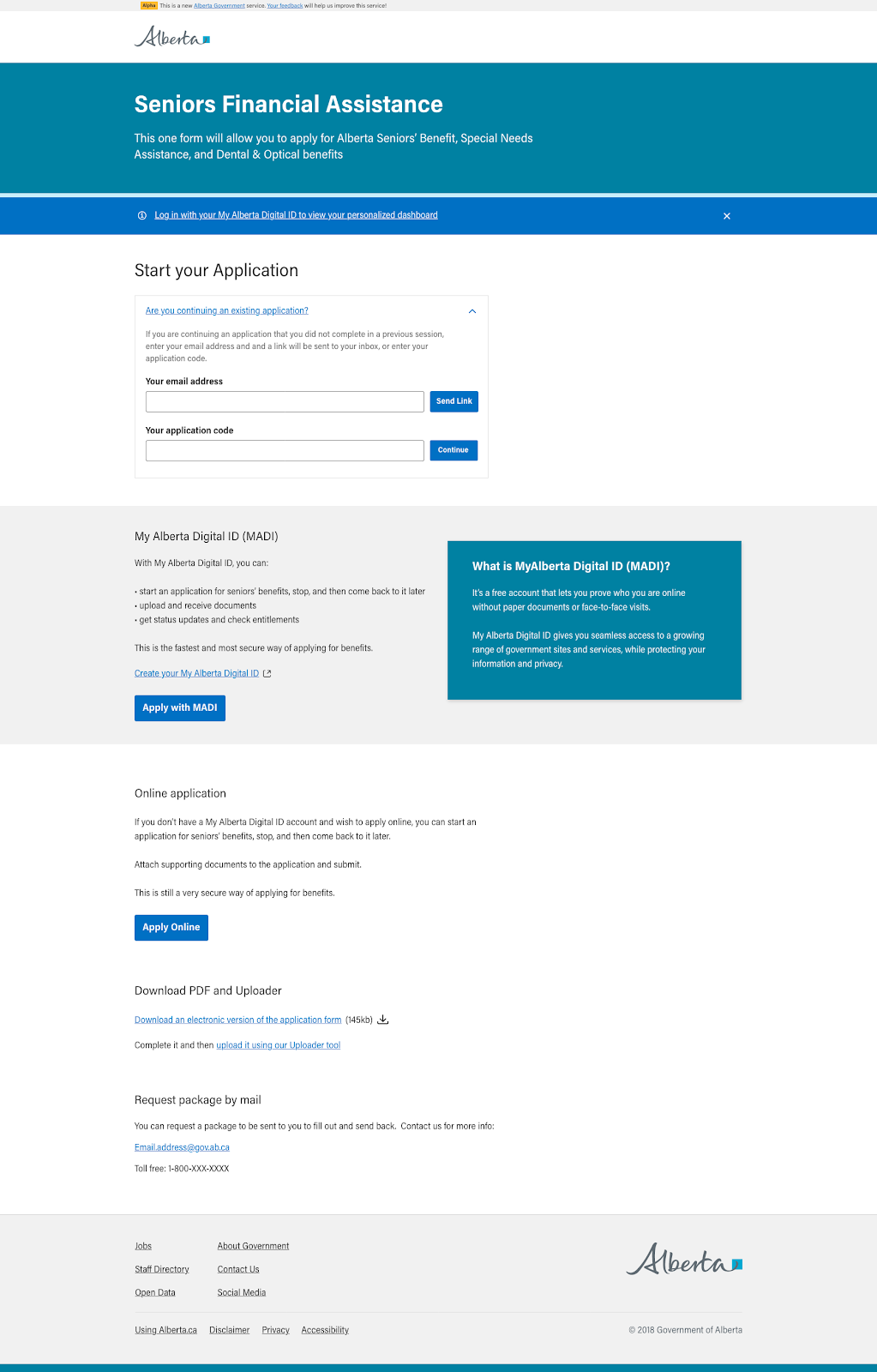
Dashboard information structure
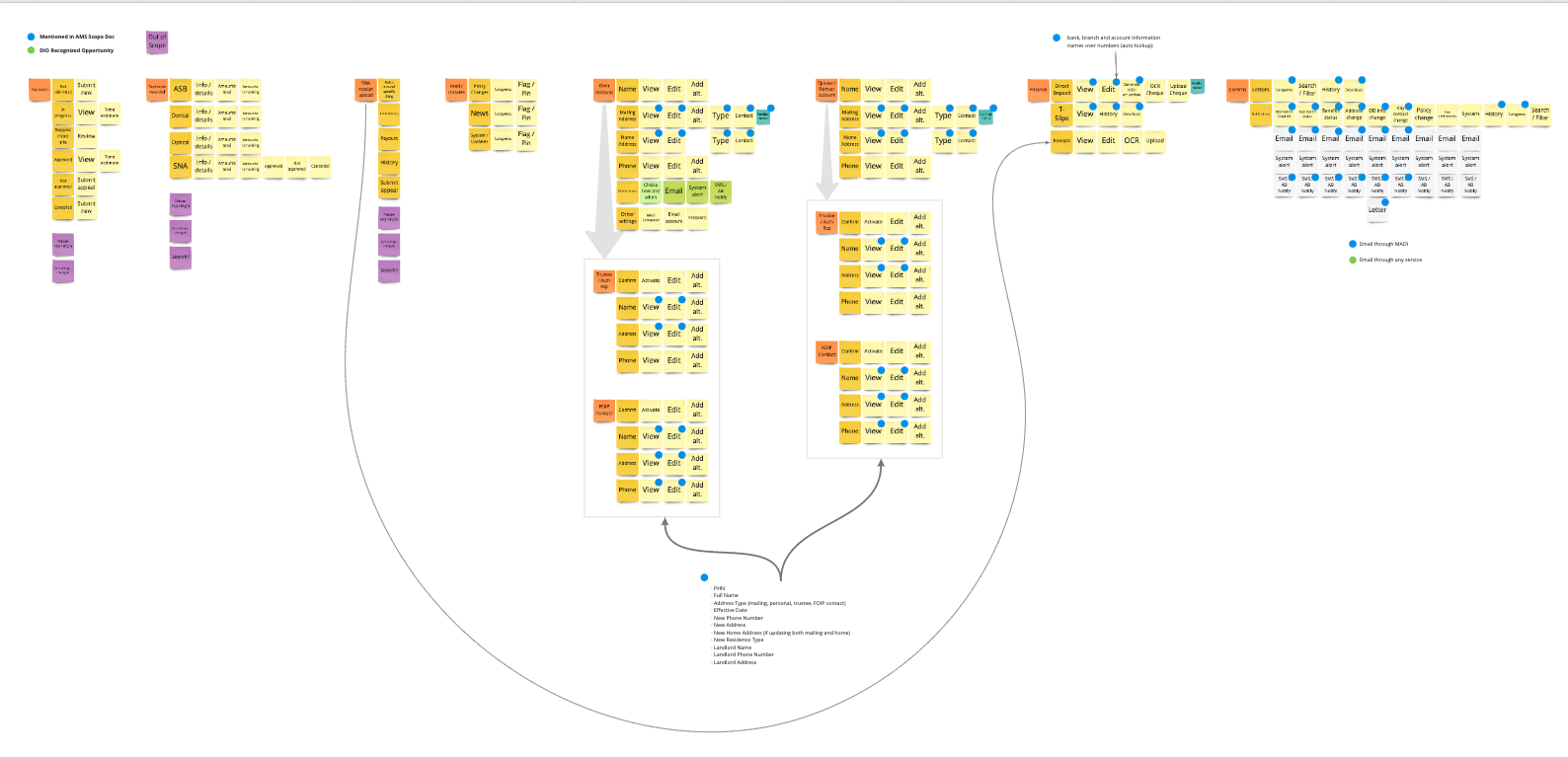
Dashboard Alpha Prototype

Dashboard Alpha Prototype — Contact information details
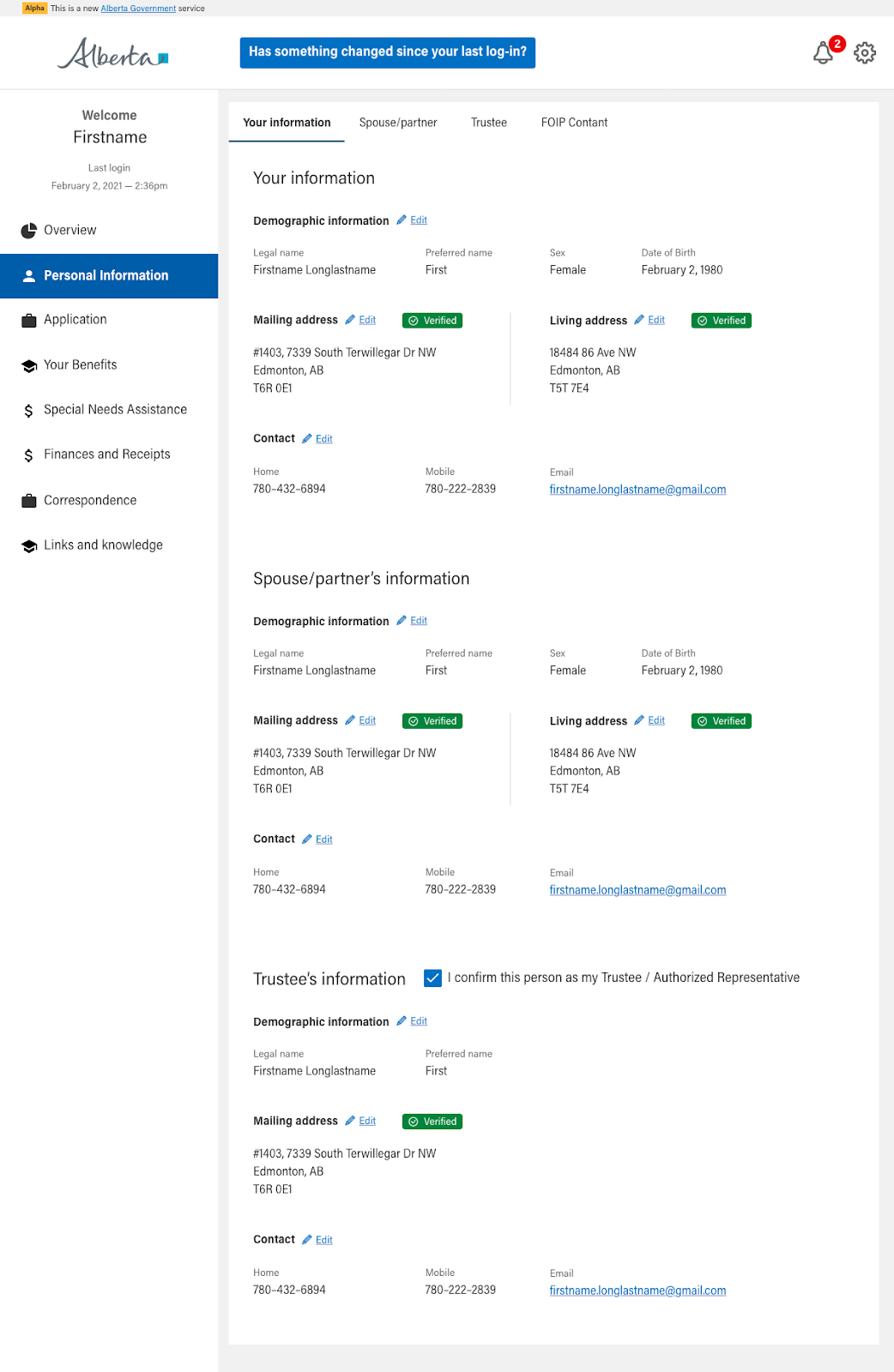
Dashboard Alpha Prototype — Process information details

Results
Outcomes
- The project’s funding was cancelled in December 2020, unfortunately
- The research and assets were turned over to the Ministry with the hopes that in a new fiscal year the project will be re-started, as there is a clear need for the work to continue.
Reflections
- There is a growing digital literacy amongst seniors. The stereotype that they are a homogenous group of “technophobes” is untrue; this is particularly seen in the younger segment of this demographic. (Digital adoption and connectivity is increasing annually.)